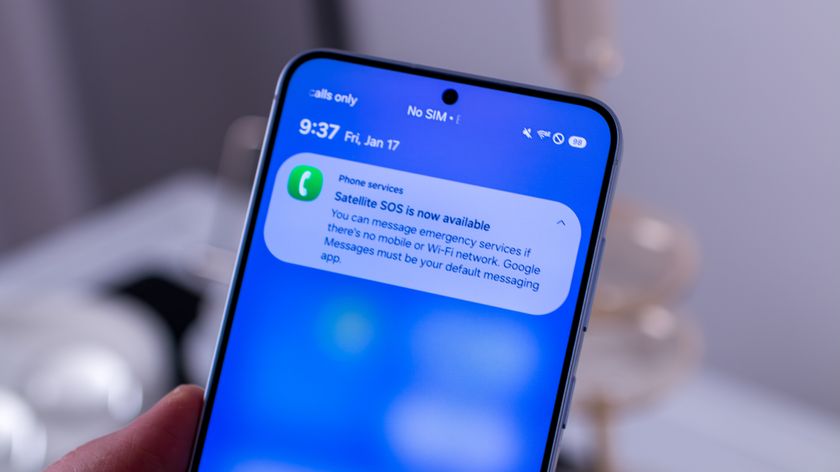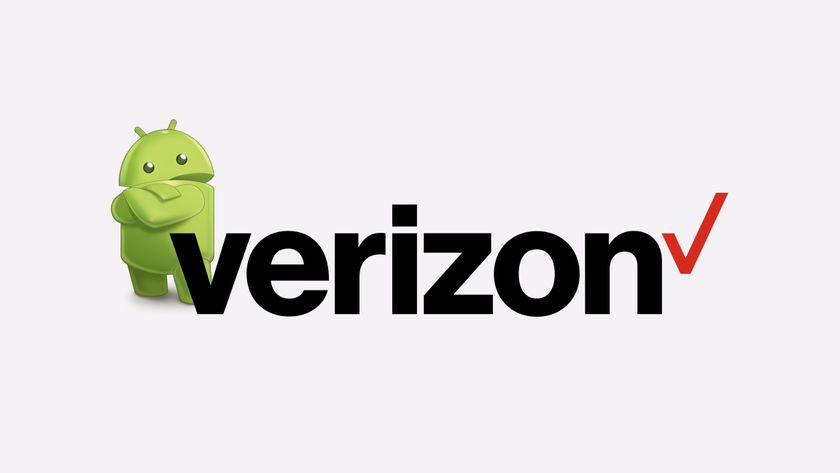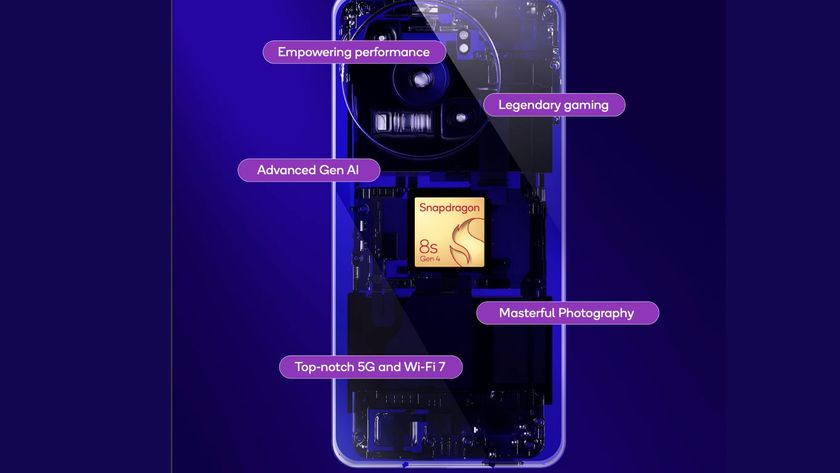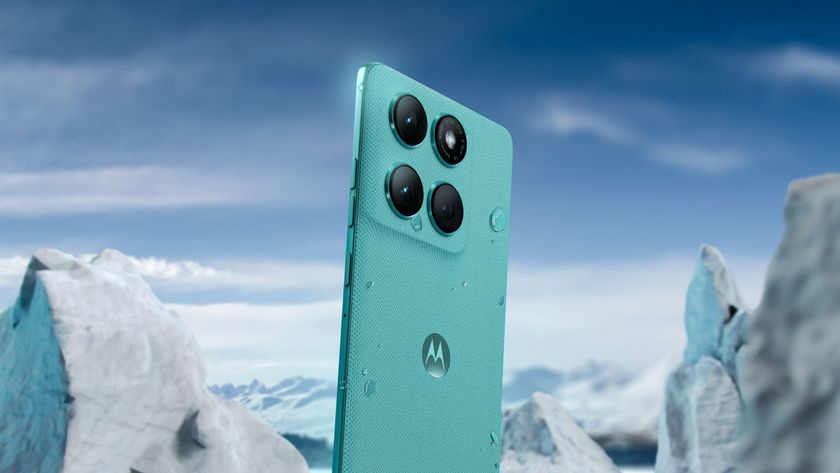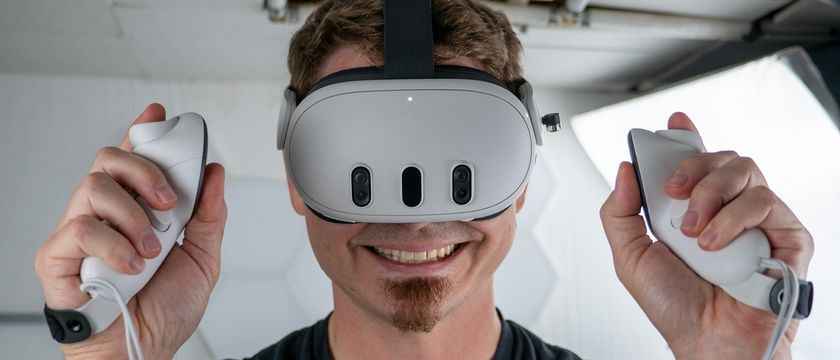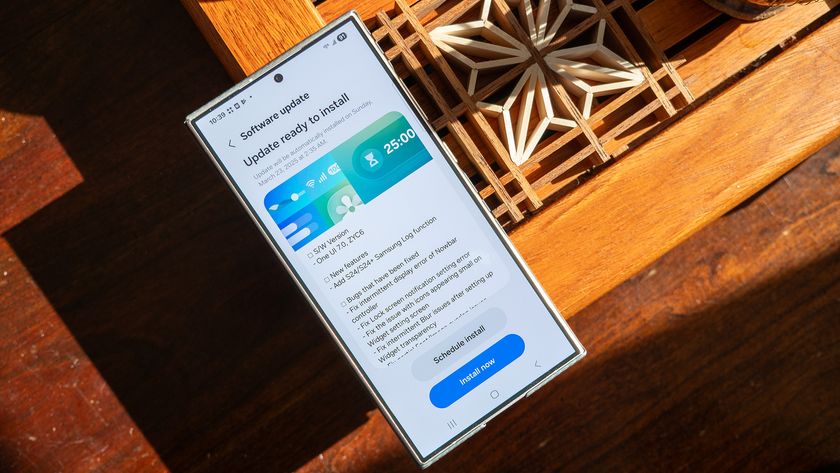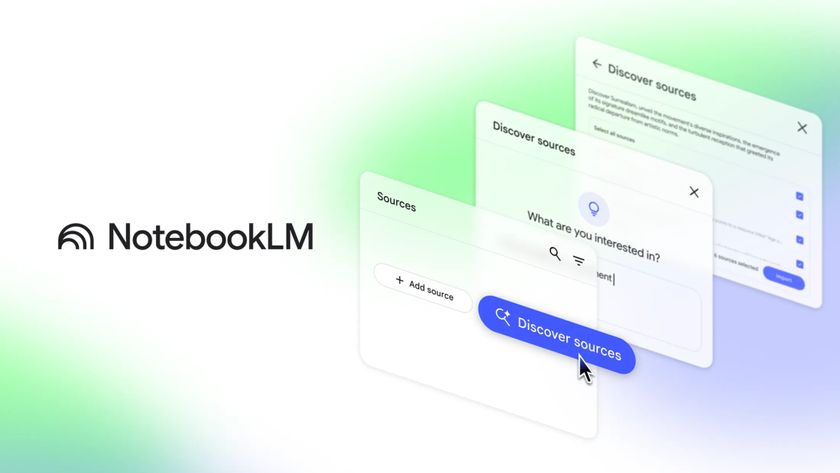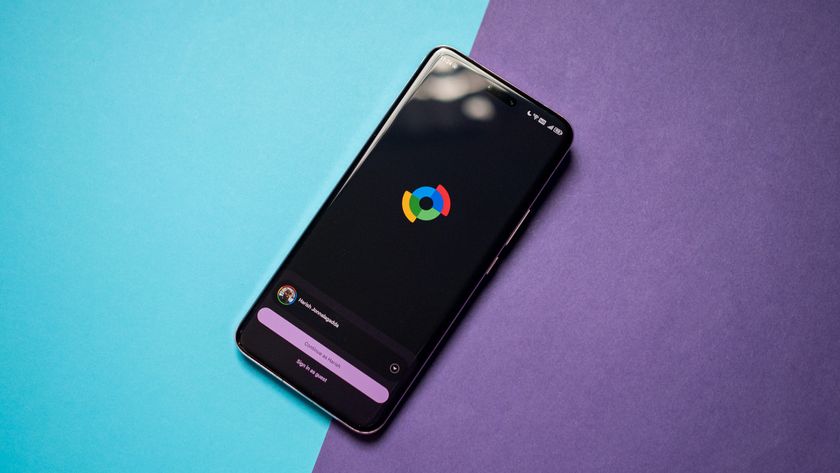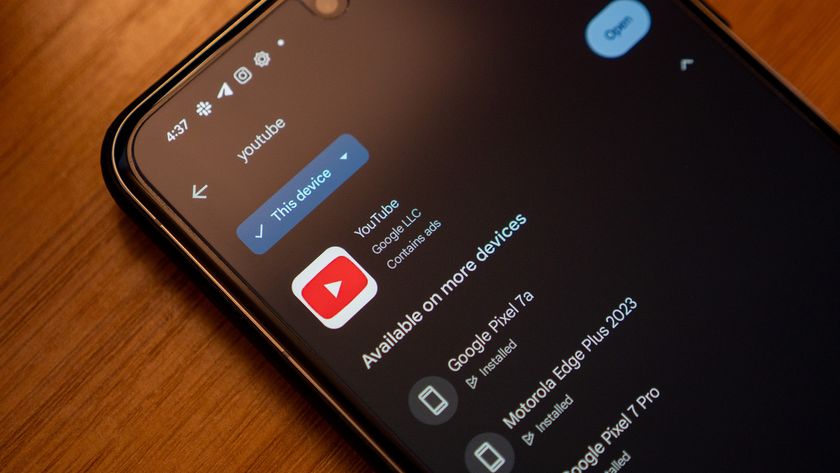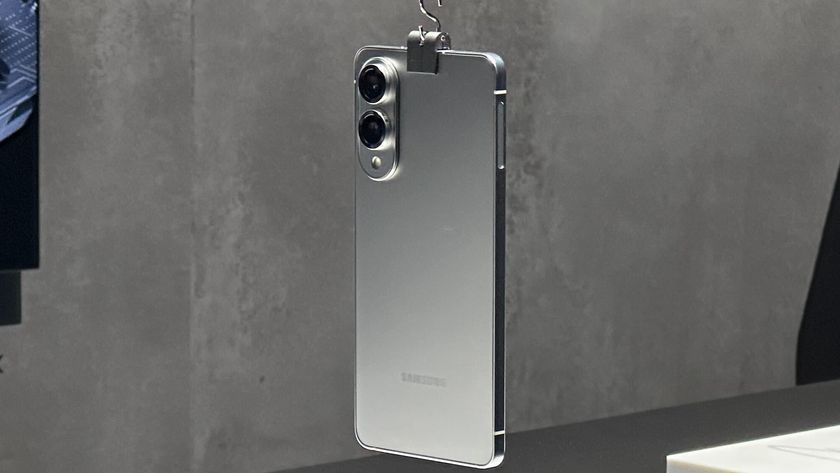Why is it so hard to find great apps? - Talk Mobile
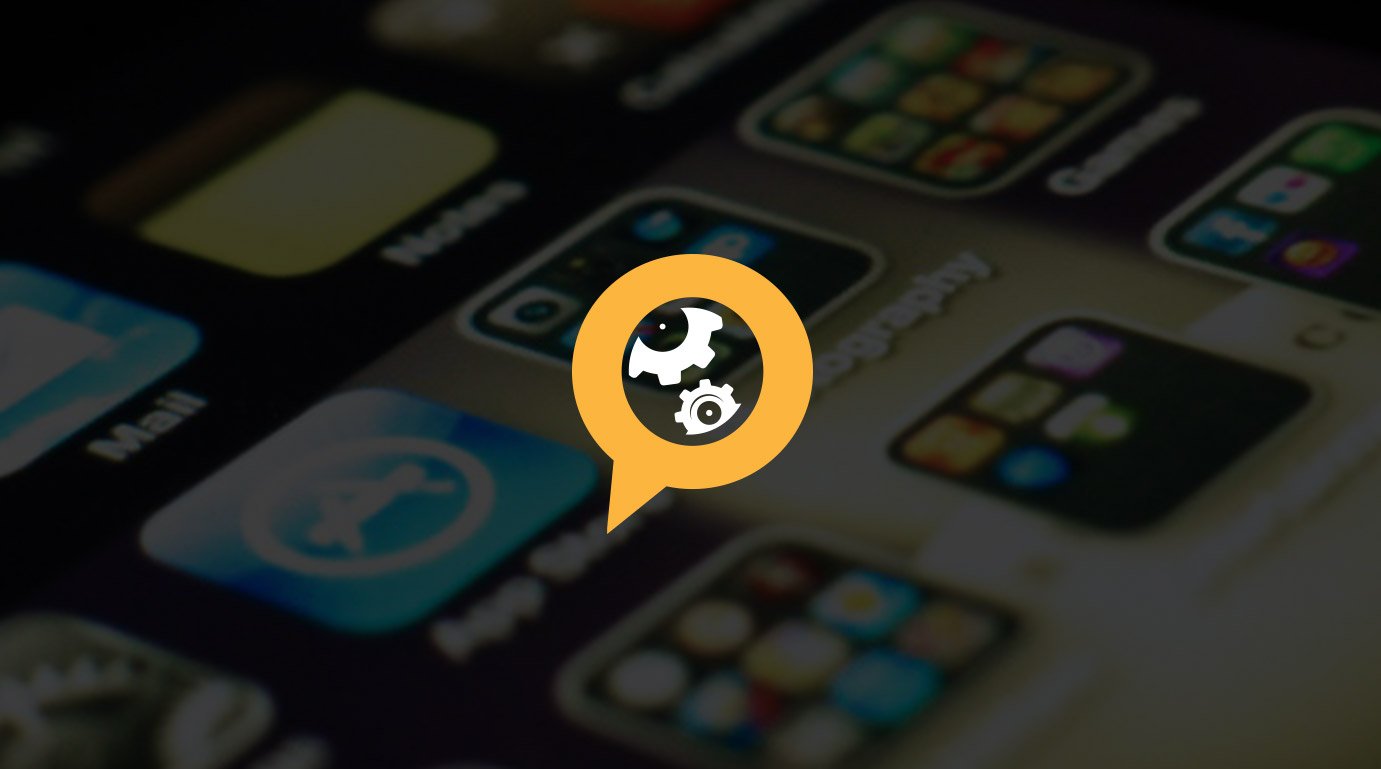
Presented by Blackberry
Talk Mobile Gaming
Why is it so hard to find great apps?
Between the iOS App Store, BlackBerry World, Google Play, and Windows Phone Store, there are more than 1.7 million apps available for smartphone and tablet users to choose from. The explosion in apps has been fueled by an explosion in users, who to date have downloaded well over 100 billion apps.
With so many apps to choose from, taking the virtual step into an app store presents a bewildering selection. Does it really matter how many apps a platform has in its store, or should we be worrying about which apps there are and how good they are?
How are we supposed to sort the good apps from the bad? Are reviews the answer, or can a managed store make a difference? Search might dig up something - if you know what you're looking for. Big name developers might offer some predictability, yet independent developers are often where you can find the innovation. Then again, big and small developers alike aren't immune from pumping out poor quality material.
So how do we sort through that to find the good apps, the best apps, the apps that really work for what you need?
By Daniel Rubino, Kevin Michaluk, Phil Nickinson & Rene Ritchie
Be an expert in 5 minutes
Get the latest news from Android Central, your trusted companion in the world of Android
Play




Finding Apps
Articles navigation
- Store Size
- Video: Guy English
- Required Apps
- Discoverability
- Indies vs. big brands
- Video: Matt Bischoff and Brian Capps
- Conclusion
- Comments
- To top

Kevin Michaluk CrackBerry
It's not size of the app store that counts
In the post-iOS App Store, post-Google Play World, BlackBerry knew that they needed to have enough apps to satisfy users of their the new BlackBerry 10 platform. They provided developers with multiple ways to build apps - including Android apps - organized port-a-thons, and more. BlackBerry 10 launched with more apps than any new platform before - 70,000 - and quickly ramped up to more than 120,000.
What really matters is that the apps you need are there, and that those apps provide a high-quality experience.
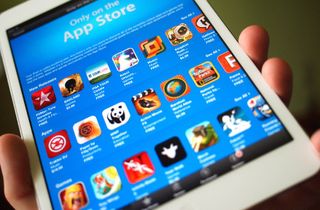
Thousands, millions, billions
When the iPhone launched in 2007, it had no third party apps. A year later, iPhone OS 2 brought the App Store with 500 apps. Within a year that number had been increased more than 100 times to 55,000, with the following years hitting 225,000, 425,000, and 650,000 apps. As it currently stands, the iOS App Store hosts more than 900,000 apps.
Downloads have likewise skyrocketed since the 2008 App Store launch. The first three days saw ten million downloads, and within nine months the App Store had eclipsed the billion downloads mark. In May of 2013, App Store downloads hit fifty billion, with the average app having around fifty thousand downloads.
Yet, on any app store what really matters is that the apps you need are there, and that those apps provide a high-quality experience. The Pareto Principle (otherwise known as the 80/20 rule) says that 20% of apps will be used by 80% of users. Those tend to be the major apps; the Facebooks and Twitters, Netflixes and Skypes, Evernotes and Dropboxes. They are the apps that everyone knows and complains about if they're missing.
The biggest advantage of a big app catalog is the remaining 80% apps. The niche apps, the hobby apps, industry apps, and variant apps that don't matter to most but are extremely important to those who need them. The overlap between users there is much smaller - different people need very different niche apps.
That's also the biggest disadvantage of an expansive app catalog. The sheer volume leads to a clutter that hurts discoverability. It becomes a challenge figuring out which apps are great and which apps simply suck. Let's say you want a floor planning app for your iPad; do you get the free version? How about the one that's available for a dollar? There's one at $3 And another at $10? You can waste a lot of time and money trying to find the best one.


If you shipped a phone tomorrow that had 10 killer third-party apps, that everyone in the world wanted to use, I think it would do very well.
- Guy English, Host of Debug, App Developer
That kind of makes me wish app stores were smaller, maybe even more highly curated. That only the best apps would make it in, and instead of having to sort through hundreds of thousands of apps, and test out a half dozen alternatives, you could just have the one, or the very few, really good ones.
App store size matters about as much as webpage count matters. It matters at the start, but beyond a certain point it's really just quality that counts.
Q:
What matters more: the number of apps, or which apps?
313
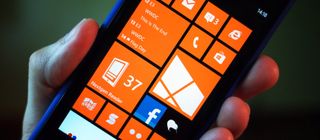

Daniel Rubino Windows Phone Central
There are the apps that you need, and then the apps that you want
The question of which apps a platform needs in order to be successful is complicated, but for brevity reasons I'll break it down into two broad categories: the tent pole apps that usually represent current and stable services (e.g. Netflix, Facebook, and Skype) and the "flavor of the month" currently-in-vogue apps which may or may not stand the test of time (e.g. Draw Something!, FarmVille, and Vine). Ideally, a platform's app selection would fulfill both categories.
Understanding that there are two broad categories for apps, we can better appreciate what is meant by "must have" apps on a platform. It's simply not enough to equate Draw Something! with a robust Facebook app, as clearly the latter has so far has outlasted the former in terms of relevancy to the mobile culture.
We often hear from would-be owners that "if it only had [insert app here], I'd switch in a second."
Perhaps the bigger question is how companies like Microsoft or BlackBerry can catch up to iOS or Android. Nailing down the tent pole apps is certainly the highest priority, as they often represent apps or services that people have used on other mobile platforms or even their personal computers. Indeed, we often hear from would-be owners that "if it only had [insert app here], I'd switch in a second". But getting those major companies to support a fledgling platform can be a problem.
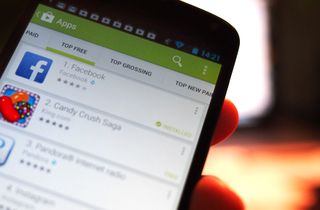
A steep fall and a long tail
With more than 700,000 apps, the Google Play Store's count is second only to the iOS App Store. Both are gain hundreds of new apps every day.
Of the top apps in Google Play, only one - the Google Play Store app itself - has crossed the 500 million downloads threshold. Just 20 apps slot between there and 100 million downloads, while just over 5,200 are between there and one million downloads.
Dropping to 10,000 downloads, just over 76,000 apps make the mark - just over 10% of all apps. Most of those are free apps with advertising or in-app purchasing for revenue. When it comes to paid apps, fewer than 250 Google Play apps have crossed the 10,000 downloads mark.
Some, like the New York Times, will gladly take seed money from Microsoft or BlackBerry in order to make an app, whereas the prickly Instagram seems very reluctant to embrace nascent platforms, even if it seems contradictory to their business goals - i.e. growth. In fact, it took until Instagram hit 30 million users on iPhone before they released a version of the app for Android.
The "flavor of the month" category of apps is often where the real exciting innovation happens as it often represents "the next big thing" in mobile. More often than not such grandiose claims often fall flat on their face in a few months as consumers move on to the next big thing. Still, to get to that status where an app can become an instant "must have" hit is an impressive feat and is what attracts new developers and ideas to a platform. Apps like Instagram and Angry Birds have made that transition.
Tent pole apps are in a sense easy since they are established and well-known. Instant-hit apps, on the other hand, are much more difficult to predict or encourage as they are by definition, unknown.
Q:
Have specialty apps held you back from switching platforms?
313


Phil Nickinson Android Central
Finding the best apps - a needle in a stack of needles
When it comes to finding the "best" apps for your smartphone or tablet, it boils down to two things: Discoverability and marketing.
The first is largely the job of the app stores. Each platform has a mechanism for showcasing applications, and that "featured" spot can make or break an app. The number of apps in a given app store actually is far less important than how easy it is to find apps in that app store. And how it chooses to feature specific apps.
First, there's the issue of nomenclature and drill-down. Surfing through the various categories you (theoretically) should be able to find what you're looking for. That still requires the app stores to help the "good" apps rise to the top. And a lot of the time that will happen naturally as apps gain popularity.
Search is ever-important as well. Search for "Instagram" and the first result should be Instagram the app, not a dozen other apps with "Instagram" in the title or description.
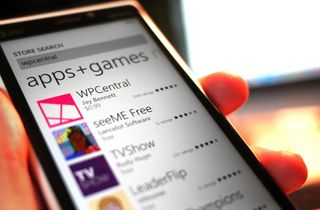
How are search results determined?
Practically every app store ever has come with a search function. When you're over a few hundred apps, categories and robust search become the only way to find apps. Each app store has its own search mechanism, but how apps in your search results end up in the order they're in is a trade secret for each company.
At the very least, the app name, description, and metadata (tags attached to a listing) are searched for strings that match your search query. Search results may also examine an app's reviews. The frequency of results from those text-based queries only form part of the rankings. Just as web search engines give higher rankings to more trafficked pages, user ratings and download counts also influence app store search results.
Build buzz around an app and you won't have to spend a dime promoting it.
Marketing is the other major tool necessary to find the best apps. That spans from traditional marketing -- advertising and the like -- as well as the all-important word-of-mouth campaign. Build buzz around an app and you won't have to spend a dime promoting it. Okay, that's oversimplified, but why spend money on virtual column inches when you can get blogs and forums and, occasionally, traditional news sources to promote your app for you?
Going "viral" and gaining popularity doesn't necessarily guarantee that an app is the "best," but one thing can certainly lead to the other.
Q:
Why is it so hard to find great apps?
313


Rene Ritchie iMore
Indie developers have focus, drive, and heart
Indies code circles around the big players. It's not even funny. Day after day, month after month, year after year, individual developers and small teams produce apps that out-innovate, out-perform, and and just plain out-delight the largest software houses on the planets.
Whether that's an indictment of the monolithic, and often mired, cultures of many of the megacorps, or just a recognition that creating great apps requires singular vision and will, the fact remains -- all of the best-crafted apps on my home screen come from indies.
The pressures of the larger corporations make it hard to sustain the indie mentality.
There are exceptions, of course. Apple tends to run their giant business like a hive of small teams, and that's led to some amazing apps, like GarageBand for iOS. Google has bought a lot of indies, like the teams behind Sparrow, Snapseed, and Slide. So has Facebook, with Push Pop Press, Instagram, and Sofa. The pressures of the larger corporations make it hard to sustain the indie mentality, though, as we saw with Twitter and their purchase of Tweetie, which has been all but laid to waste.
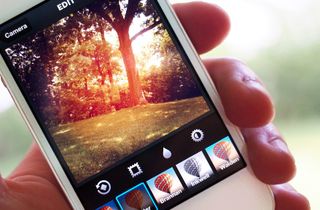
The billion dollar buyout
Launched in October 2010 exclusively on the iPhone, Instagram quickly exploded. It wasn't the first photo filtering app, but Instagram did seem to be the one that cracked the specialized photography social network nut, filling a void that legacy services like Flickr seemed content to abandon.
A year-and-a-half later, Instagram had 30 million active users and had just launched a new Android app when the thirteen-person firm with a grand total of nine separate investors was purchased by Facebook for $1 billion. Today, Instagram has grown to more than 100 million active monthly users and continues to operate as a small team apart from the rest of the Facebook infrastructure.
Even then, when a great indie developer or shop gets bought out, another often rises up to take its place. And there's a reason for that.
Every great indie app is a love story. It has to be. No one can devote the time, energy, passion, and resources required to birth a fantastic app unless they truly, deeply, love what they do and the products they make. Even when it comes at terrible cost to everything else in their lives, they build the apps they want and need, and the results are often not only best in class, but a class unto themselves.


When it comes to the indie vs. big company debate, it really comes down to whoever cares the most.
- Matt Bischoff and Brian Capps, iOS engineers, Lickability
Corporations can afford to compromise, or be forced to. Indies can't, and don't have to. They can make the app that realizes their singular vision, through sheer force of will, and make it great. That's why Dropbox is better than any platform-owned sync system to date - their singular focus on building a straight-forward folder in the cloud has resulted in a stable and innovative service. They're not tied in to the fate of a platform or device or app and that gives Dropbox the freedom to innovate.
That's also why I support every amazing indie developer and app I come across. That, and because I want more of them. Lots more.
Q:
Indies vs. big studios - who makes the best apps?
313
Conclusion
Finding the right apps can be an exercise in frustration. There are hundreds of thousands to sort through, and even if you have an idea of what you're looking for it can be a daunting process.
But those absurd numbers mean that there's bound to be an app that will meet exacting your needs. Thanks to competition between big development studios and indie developers, those apps are bound to be original and creative and push boundaries.
That is assuming you can find them the good apps. Having developers whose work you trust, accurate ratings from an active user community, consumer and professional reviews, and a strong and robust search system can help. So too can a degree of curation with the app store manager actively highlighting and promoting quality new apps.
It is possible to find the right apps. It's not as easy as it could be, or as easy as it should be, but it can be done. But what will it take to make it better?

